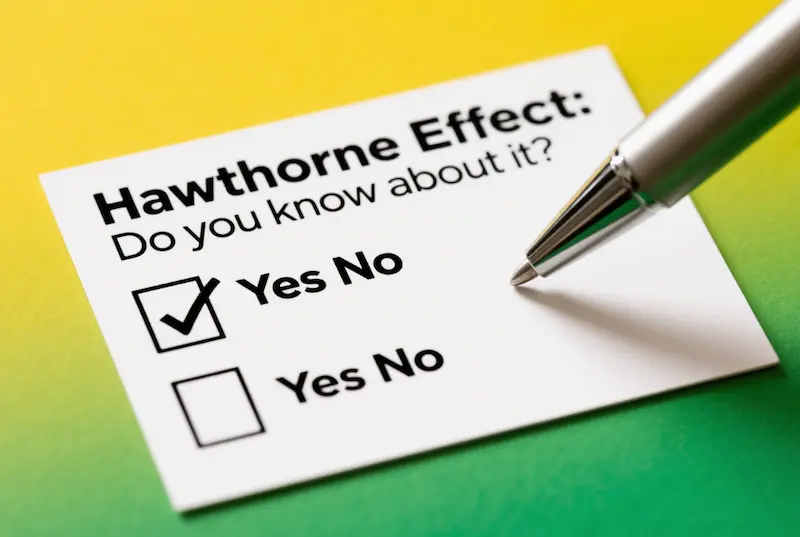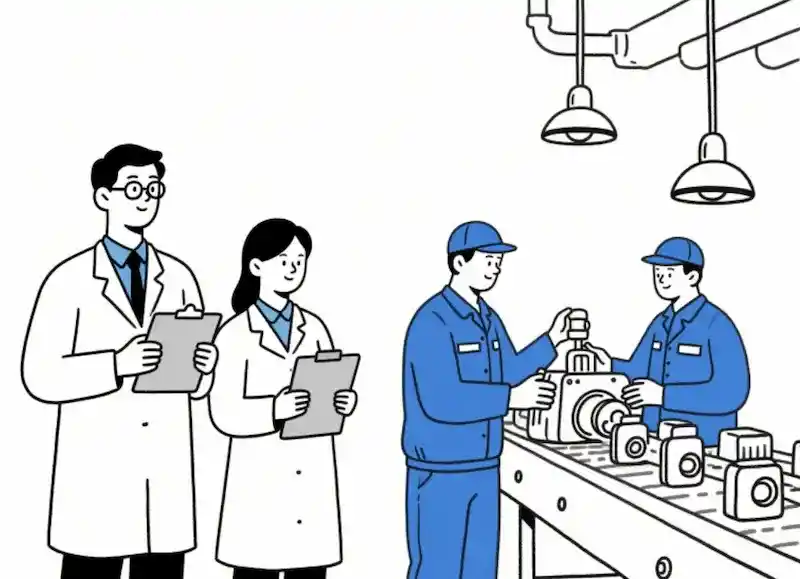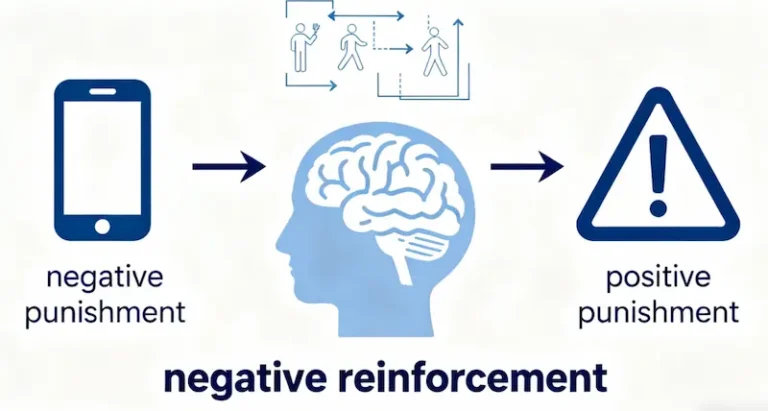Hawthorne Effect: What It Is, How to Apply It, and Real-Life Examples for Work & Education

Imagine a factory worker on an assembly line in Detroit, repeating the same tedious task—attaching door handles to car frames—day after day. Their productivity has stayed flat for months, and they often feel invisible in the busy plant. Then, a team of researchers arrives: they walk the floor, take notes on workflow, and even stop to ask the worker about their daily challenges. Suddenly, something shifts. The worker starts moving faster, double-checking their work, and even volunteering to help a coworker. Their productivity spikes by 15% in just two weeks.
Why does this happen? It’s not because of new tools or a raise—it’s the power of the Hawthorne Effect, one of psychology’s most impactful concepts for shaping human behavior. For anyone looking to boost engagement (whether in a team, classroom, or family), understanding this effect is a game-changer.
What Is the Hawthorne Effect? A History of the Famous Experiment
The Hawthorne Effect refers to the tendency for people to change their behavior when they realize they’re being observed—usually shifting toward more positive, productive actions. The term comes from a series of groundbreaking studies conducted between 1924 and 1933 at the Western Electric Company’s Hawthorne Works in Chicago, Illinois (a factory that once employed over 40,000 people).
The experiments started with a simple goal: to test how environmental factors (like lighting) affected worker productivity. Researchers split workers into two groups: one with changing lighting (brightened, then dimmed) and a control group with constant lighting. The results shocked everyone:
- When lighting was increased, productivity went up.
- When lighting was decreased (even to near-candlelight levels), productivity still went up.
- The control group—with no lighting changes—also saw productivity rise.
Confused, researchers expanded the experiments to test other variables: shorter workdays, extra breaks, better pay, and even free meals. Again, every change led to higher productivity—until the experiments ended. Once the workers stopped being observed, their performance dropped back to pre-study levels.

It wasn’t until 1939, when Harvard psychologist Elton Mayo published his analysis, that the truth emerged: the workers’ productivity didn’t rise because of lighting or breaks—it rose because they felt seen. For the first time, someone was paying attention to their work, asking for their input, and treating them like individuals (not just cogs in a machine). As Mayo wrote in his book The Human Problems of an Industrial Civilization, “The mere fact of being selected for a study… created a sense of pride and responsibility.”
Why Does the Hawthorne Effect Work? The Psychology Behind It
The Hawthorne Effect isn’t just a “quirk” of human behavior—it’s rooted in two key psychological needs that matter to people everywhere, including Americans: the need for recognition and the desire to align with others’ expectations.
1. Fulfilling the Need for Respect (Maslow’s Hierarchy)
Abraham Maslow’s famous “Hierarchy of Needs” places “esteem” (respect from others and self-respect) as a core human need—above basic needs like food and safety, but below self-actualization. The Hawthorne Effect taps directly into this.
When someone observes you (and shows genuine interest), your brain interprets it as respect. You want to “live up” to that respect by performing better. For example:
- A teacher in a New York City middle school notices a student who rarely speaks in class. Instead of ignoring them, the teacher pulls them aside for a 5-minute chat each week, asking about their hobbies and what they find tricky in math. Over time, the student starts raising their hand—because they feel the teacher values their input.
- A manager at a Texas-based retail store makes it a habit to stop by each employee’s register once a week, not to check for mistakes, but to say, “I noticed you helped that customer find their gift—great job staying patient.” Employees report higher job satisfaction, and turnover drops by 22% (consistent with data from the Society for Human Resource Management, or SHRM).
2. Reshaping Self-Perception: “If They’re Watching, I Must Matter”
Observation also changes how we see ourselves. When we’re ignored, we might think, “My work doesn’t matter” or “I’m not good enough.” But when someone pays attention, we start to rethink that narrative.
Take a high school soccer team in California: the coach usually focuses on star players, but this season, they make a point to give feedback to every substitute—even if they only play 5 minutes a game. One substitute, who’d never scored a goal, starts staying late to practice. When asked why, they say, “The coach noticed I was working on my shots. I realized I could be good if I tried.” A month later, they score the winning goal in a playoff game.
This is the Hawthorne Effect at work: the coach’s attention didn’t just change the player’s behavior—it changed their self-belief.

How to Apply the Hawthorne Effect in 3 High-Impact Scenarios
The Hawthorne Effect isn’t just a historical curiosity—it’s a practical tool you can use today. Below are actionable ways to apply it in the three areas where Americans most want to drive change: work, education, and family.
Hawthorne Effect in the Workplace: Boost Employee Engagement
American workplaces lose $450-550 billion annually due to low employee engagement (Gallup, 2023)—and the Hawthorne Effect is a low-cost way to fix this. Here’s how:
- Replace “check-ins” with “connect-ins”: Don’t wait for performance reviews to talk to your team. Schedule 10-minute weekly chats with each employee, and focus on their experience:
- “What’s one thing that made your week easier?”
- “Is there a task you’re proud of that no one noticed?”
A 2022 study by McKinsey found that teams with weekly “connection chats” have 31% higher productivity than those without.
- Celebrate small wins publicly: You don’t need a big budget—just a team email or a quick shoutout in a meeting. For example: “Shoutout to Maria for fixing that software glitch yesterday—she saved the team 2 hours of work!” This makes employees feel observed and valued.
- Invite input (and act on it): The original Hawthorne workers felt empowered because researchers asked for their opinions. Do the same: Ask your team, “What’s one thing we could change to make your job better?” Then implement at least one suggestion. A SHRM survey found that 76% of employees who see their input used are more loyal to their company.

Hawthorne Effect in Education: Help Students Thrive
American teachers often struggle to engage “quiet” or low-performing students—but the Hawthorne Effect can turn this around. Here’s how to use it in K-12 classrooms or even college:
- Give “targeted attention” to struggling students: Instead of only calling on top performers, make a list of students who rarely participate. Spend 2-3 minutes with each one after class:
- “I noticed you were taking great notes during the science lab—want to share one thing you learned tomorrow?”
- “Math can be tough—let’s work through this problem together next week.”
A study by the National Education Association (NEA) found that this kind of one-on-one attention can raise a student’s test scores by 10-15% in a semester.
- Use “progress tracking” with students: Give students a simple chart to track their own progress (e.g., “number of books read” or “math problems solved”). Check in with them weekly to review the chart. When students see you’re paying attention to their growth (not just their grades), they’re more likely to keep trying.
- Avoid “negative observation”: The Hawthorne Effect only works if attention feels positive. Don’t call students out for mistakes in front of the class—instead, pull them aside and say, “I know you can do better. Let’s figure out how to fix this together.” Shame kills motivation; respect fuels it.
Hawthorne Effect in Family Life: Strengthen Bonds
Many American parents focus on correcting their kids’ mistakes (e.g., “Clean your room!” or “Stop fighting with your sibling”)—but the Hawthorne Effect shows that positive attention works better. Try these tips:
- Notice “small positives” and comment on them: Instead of ignoring good behavior, point it out:
- “I saw you share your toy with your cousin—that was kind!”
- “You finished your homework without being asked—great job staying responsible.”
The American Academy of Child and Adolescent Psychiatry (AACAP) says this kind of positive reinforcement builds self-esteem and reduces misbehavior.
- Have “one-on-one time” with each child: If you have multiple kids, spend 15 minutes a day with each one, doing something they love (e.g., playing video games, drawing, or walking the dog). This undivided attention makes kids feel valued—and more likely to listen to your rules.
- Involve kids in “adult tasks”: Ask your child to help with a simple chore (e.g., “Can you help me plan dinner tonight?” or “Can you fold the towels?”). When you trust them with a task, you’re sending the message, “I see you as capable.” Kids who feel capable are more likely to take initiative.

Common Misconceptions About the Hawthorne Effect
The Hawthorne Effect is powerful—but it’s often misunderstood. Let’s clear up three common myths:
- Myth 1: “Any kind of observation works.”
False. The effect only works if attention feels genuine. If a manager walks around the office staring at employees’ screens (without talking to them), it feels like surveillance—not respect. Employees will get stressed, and productivity will drop. - Myth 2: “It’s a short-term fix.”
Not necessarily. The original Hawthorne workers’ productivity dropped when the experiments ended—but that’s because the attention stopped. If you keep giving consistent, positive attention (e.g., weekly chats, regular praise), the effect can last for years. - Myth 3: “It works for everyone.”
Mostly—but some people (e.g., introverts or those who’ve been ignored for a long time) may need time to trust the attention. Start small: a smile, a quick comment, then build up to longer interactions. Patience is key.
The Hawthorne Effect is a powerful reminder that one of the simplest things we can do to drive positive change is to pay attention. You don’t need a big budget, fancy tools, or a psychology degree—just a willingness to see the people around you as individuals.
Whether you’re a manager looking to boost team engagement, a teacher trying to help students succeed, or a parent wanting to strengthen your family, the Hawthorne Effect can help. It’s not about “controlling” behavior—it’s about empowering people to be their best selves.
Have you used the Hawthorne Effect in your life? Maybe you noticed a change in a team member after checking in, or a student who opened up after a quick chat. Share your story in the comments below—we’d love to hear how attention made a difference for you. And if you know someone who could benefit from this guide (a teacher, manager, or parent), pass it along—small acts of sharing can lead to big changes.







What’s up, I wish for to subscribe for this webpage to take hottest updates, so where can i
do it please help out.